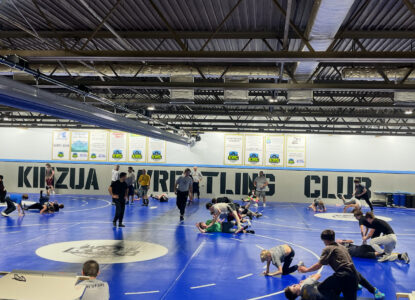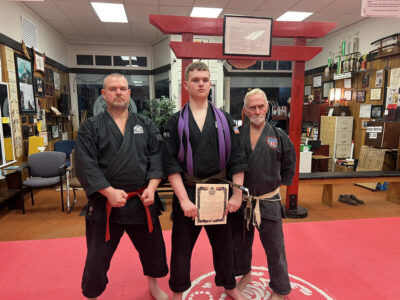Following the blood
I was recently talking to a professional guide and, as you can expect, the conversation turned to problem hunters. Eventually, I had the opportunity to ask him, “What is one skill you wish more hunters possessed?” The answer did not surprise me, he said, as he tracked blood.
Far too many hunters prepare for the hunt with the passion of a prizefighter preparing for a title defense, but fail to realize that a hunt rarely ends with a single shot. Ask yourself, when was the last time a deer dropped in its tracks when you shot it? Rarely. Deer, like most wild animals, can take a massive amount of damage without falling. Even a near-perfect shot is unlikely to drop on their tracks.
An example of this happened a few seasons ago. My hunting partner’s son shot a nice buck at a little over 100 yards across an open field. Although the field was open, it was rolling with multiple dips and ridges, making visual observations difficult. We saw the deer buck, usually a good sign, and took off towards the next drop. When we went to retrieve the buck, we could not see it anywhere.
Back to where he was hit. There was a massive amount of blood, a trail that looked like a paint roller had left it, but no deer. We slowly followed the blood to the tree line, sneaking and peeking as we made our way deeper and deeper into the dense foliage. Finally, we found it lying almost 800 yards from where the shot was made. Doesn’t sound like far until you find out that when we gutted him, it was discovered the heart was torn in two — a perfect shot, but he still managed to make it to safety.
The point is that tracking blood is required more often than not, and the skill is dying. Here are some tips to help you find the next drop.
Be prepared to track every shot. Never assume you will find your target lying dead. Unless you saw or heard it drop and stop moving, assume it kept going.
Start at the very beginning. Mentally note the animal’s position when the shot was taken. This will be the start of the track, and what you see here can provide valuable insight into how badly the animal is hit.
Look small, see small. Even with a great hit, the chances of a spurting arterial bleed all the way to the carcass are slim. Eventually, the blood slows, either because the wound is clogging or because the blood is running low. This means that, many times, the blood you see is going to be in drops, not buckets. Train yourself to see small drops, broken twigs, and other signs of slowed movement.
Blood is not always down low. We have been talking about how far a deer goes with a perfect hit, but most hits are not ideal. This translates to weird things when it comes to blood trails. Blood can drip here or there and then stop, or it can be higher up on leaves and branches where the deer rubs as it passes. Neither is a sure sign of a deer that will live; it can also mean heavy internal bleeding, but they can be hard to follow and result in a lost trophy if not followed correctly.
Do not walk directly on the trail. No matter how much blood you see or how good the hit may have been, the search is not over until you are standing over the deer. There is always a chance you will need to call for help when tracking, so make sure you preserve the track until the deer is in hand.
Back out and reset. If you do lose the track, start over. You do not need to go all the way back to where the shot was made, just to where you last had good blood. This is why I like to mark good, easy-to-identify blood with either a flag or on my GPS. If I lose blood, I return to this spot and start the track again, making sure that what I followed before was actually blood.
Do not give up. Unless it is obvious that you made a bad shot, by which I mean survivable, do not give up. Pull out, regroup, get help, but put in the time and effort to recover any animal shot.



